09 November 2018
The casualties of WWI – including John Lyon’s 59 – recalled at poignant Remembrance ceremony
The names of the 59 Lyonians killed in World War One were read aloud as the School gathered to mark Remembrance Day in words, music and silence.
At 11.00am on Friday 9th November, 600 boys, teachers and support staff, as well as a number of Old Lyonians, gathered around the School’s War Memorial in Red House Garden for the ceremony.
Readings by Arshan Shroff OL amd Deputy Head Boy Shourya Shuri focused on the Lyonians of the Great War (below), whilst Head Boy Ed Davey led the act of Remembrance, after which the Last Post was sounded by Year 9 Sayam Shah.
In a short address, Lyonian Chaplain, The Reverend Hugh Wilkner OL, talked of the bravery of those killed in all conflict, and focused on the story of Noor Inayat Khan – recently in the news as a possible face of the new £50 note – a British Muslim Second World War heroine, who fought against Nazi evil and gave her life in pursuit of peace.
Wreaths were laid at the School’s memorial by Deputy Head Boy Javier D’Souza and Liam Moore OL, and by OL President Paul Matarewicz and School Head Miss Katherine Haynes.
The Pride of Lyon’s choir sang S S Wesley’s Lead me Lord.
Each year John Lyon runs a competition in Year 9 to write a Remembrance poem, building on the teaching in both English and History, and also on the Remembrance commemoration in school. Each year the standard is high, and the sense of pride in the writing is tangible.
This year Andrew McKenzie has written Our Boy, a poem in which he draws influence from poets such as Siegfried Sassoon to consider the responses to death in war seen in much of the writing studied. His poem skilfully utilises multiple voices and also contains a suitably ironic final stanza in which the tragic and wasteful death of the recruit is discussed. The English Department were hugely impressed by this work which indicated a maturity far beyond Year 9 in terms of the handling of such sensitive material.
Our Boy
Andrew McKenzie
“Cretinous boy,” growled Mother as she gripped
That fateful telegram, slowly releasing her rage,
Her melancholic rage. “Why, why must he abandon
The idyllic dream that waited for him, to smite a few
Germans?” She bowed her head, stifling a choke,
While she saw him bound across a wasteland,
Giddy in the head, firing confetti for bullets,
Only to be sent to sleep forever in a flooded hole in France.
“Now, now dear,” replied Father glibly.
“He fought for King and country. Let us praise him.”
He slunk back in his rocking chair, and stared
Out of the window, and visualised his courageous child.
Leaping, darting, weaving, shooting,
He dashed through Death’s land and tried
To be a hero, a name to be remembered. It was truly
A shame that the barbed wire wrestled him, and won.
The Colonel laid back and sighed.
He felt pitiful for the lad, who had so much potential,
But the journey was treacherous, no doubt.
So it was hardly his fault when he slipped and fell
Into the quagmire and sank out of sight.
His final memory was a field of brown,
His last words a hideous gargle.
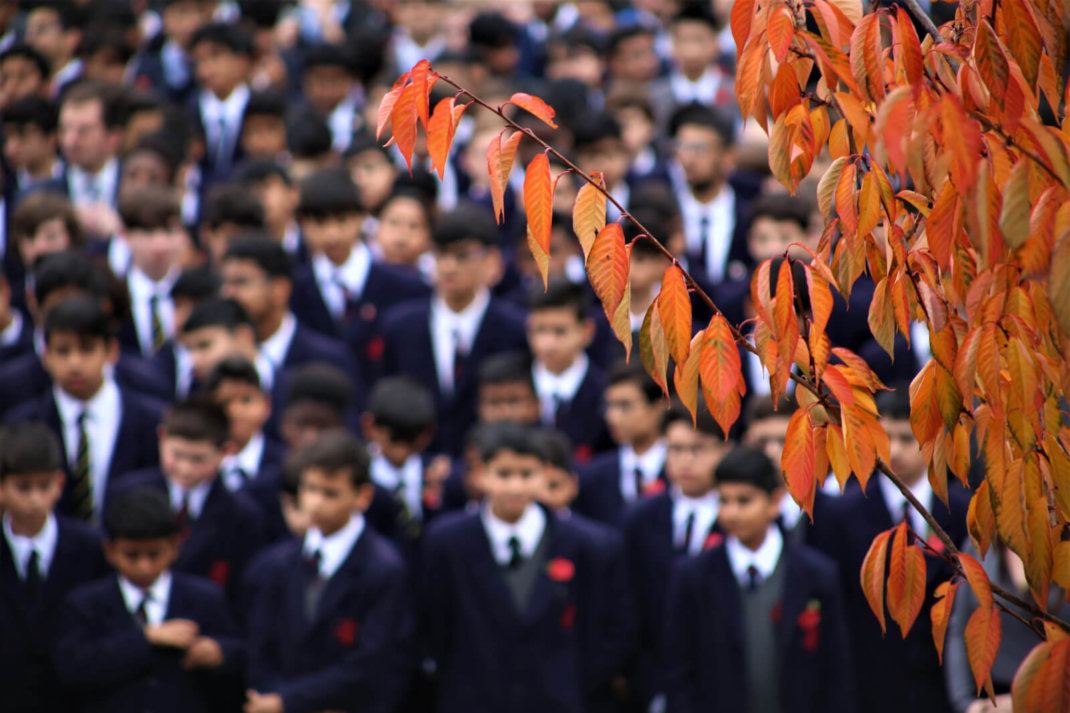
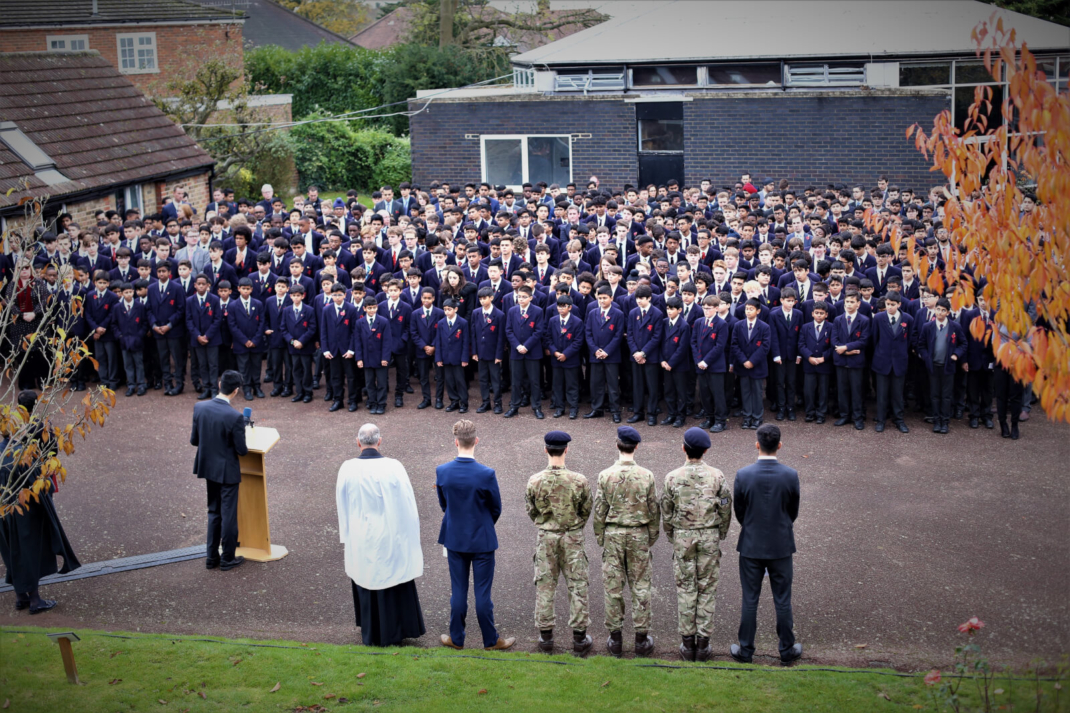
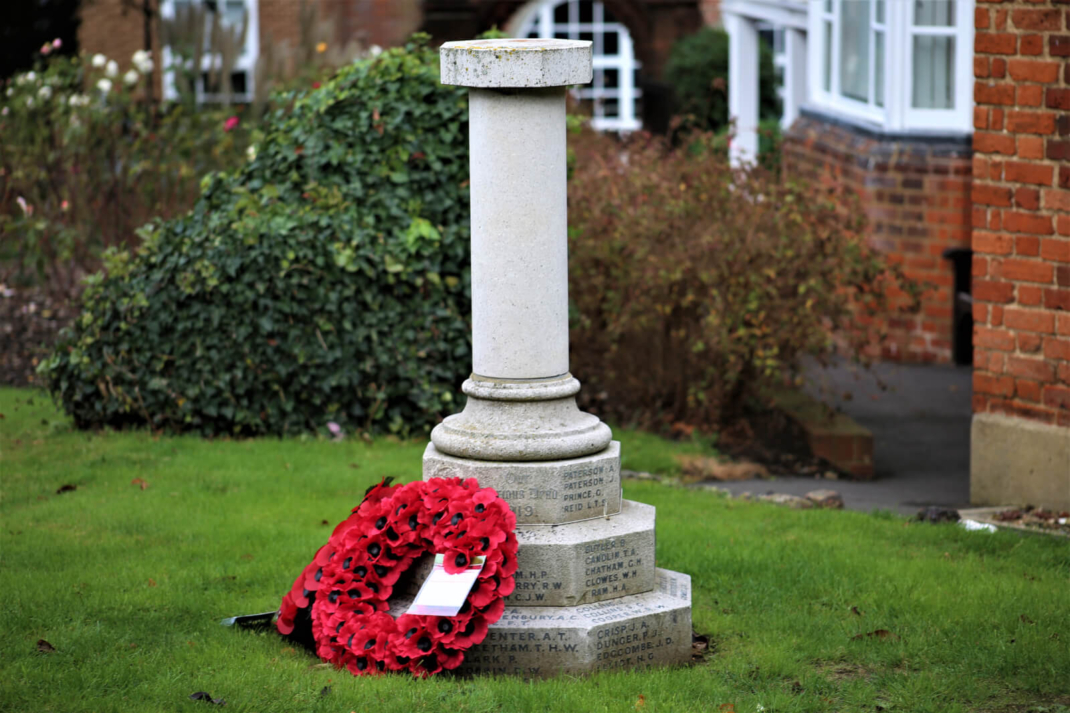
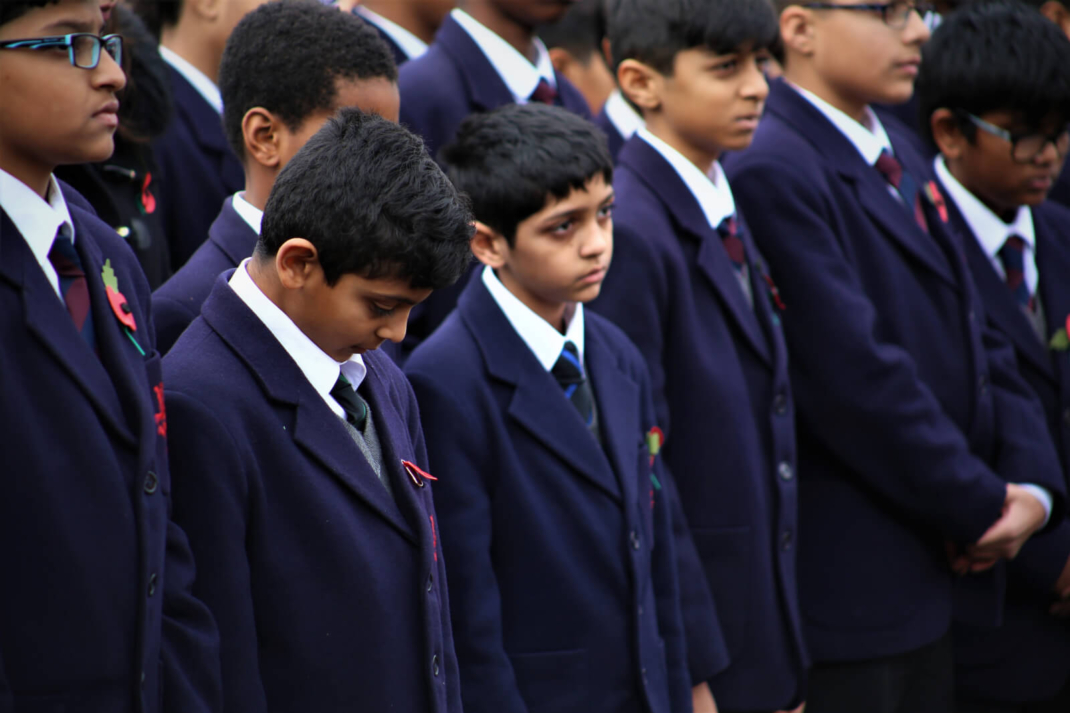
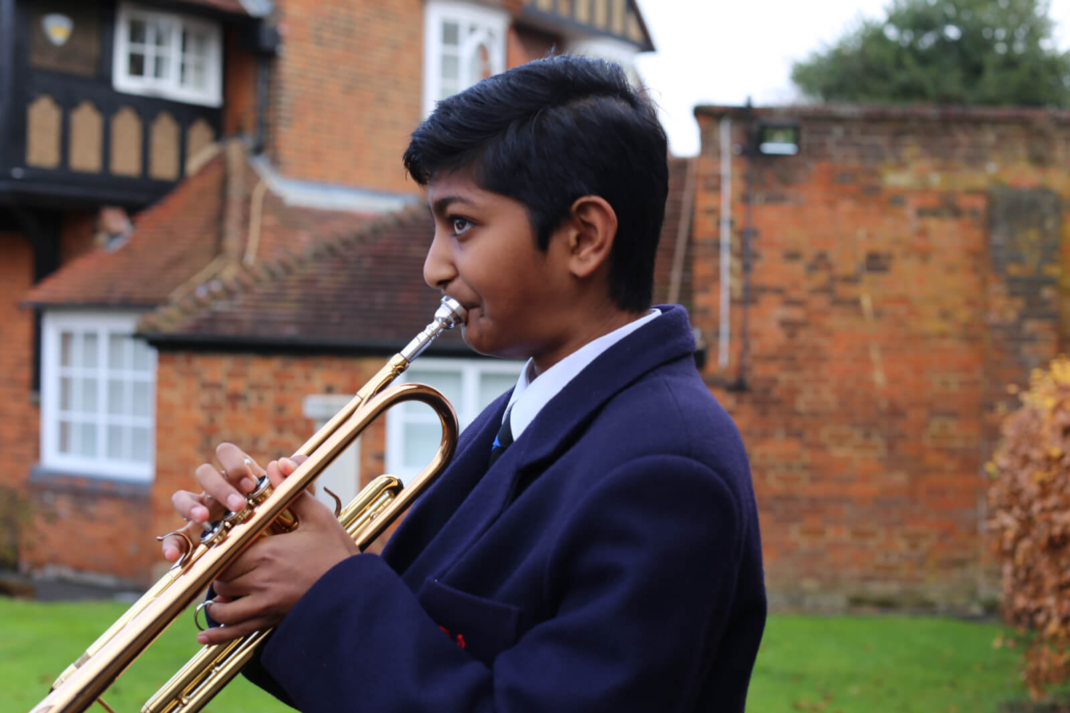
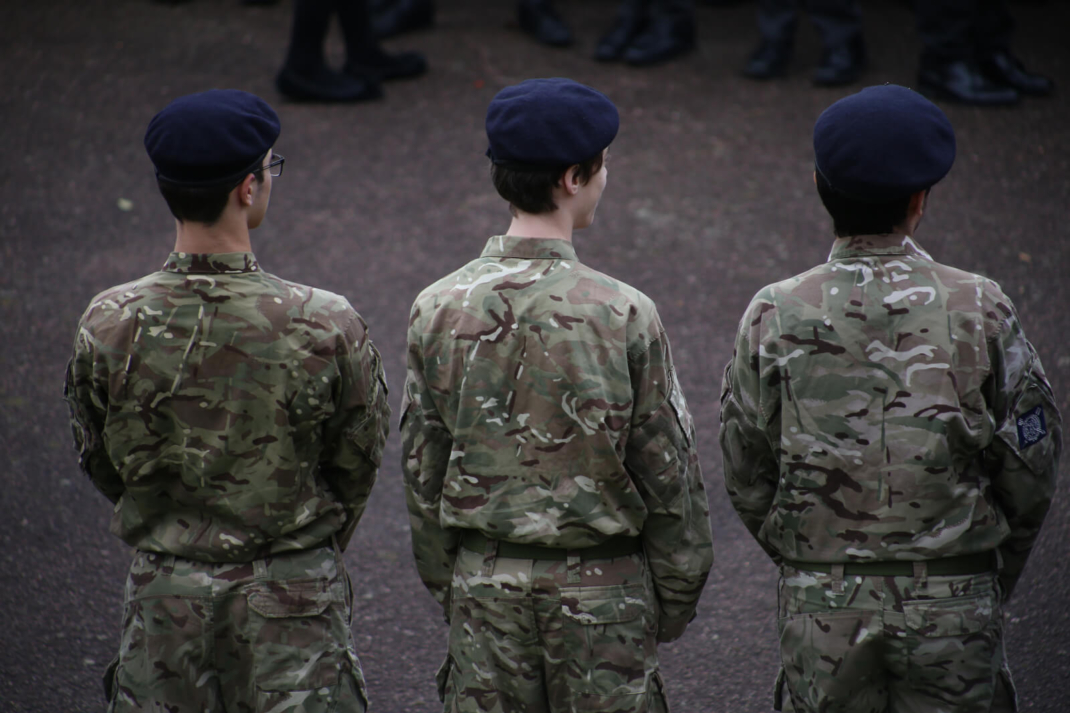
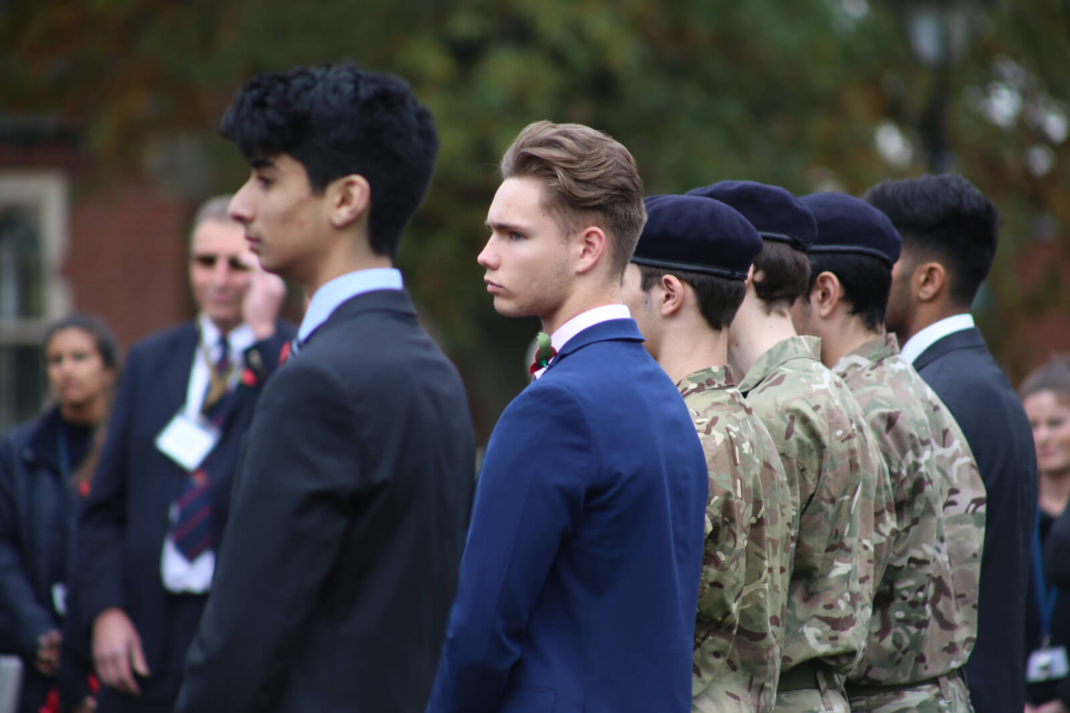
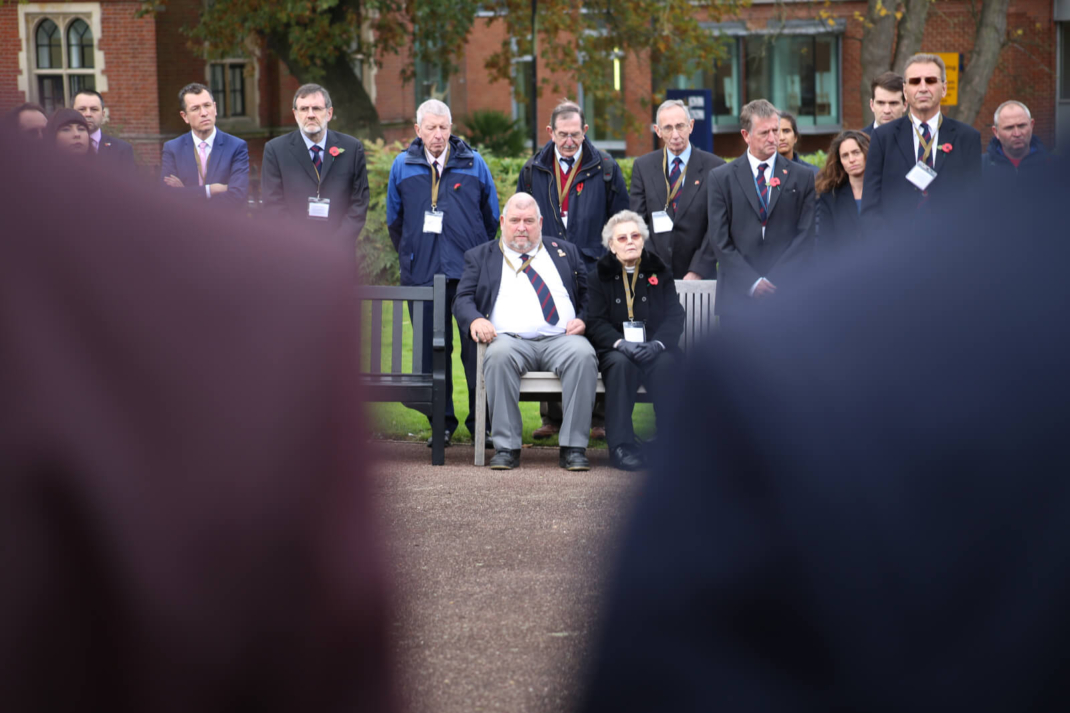
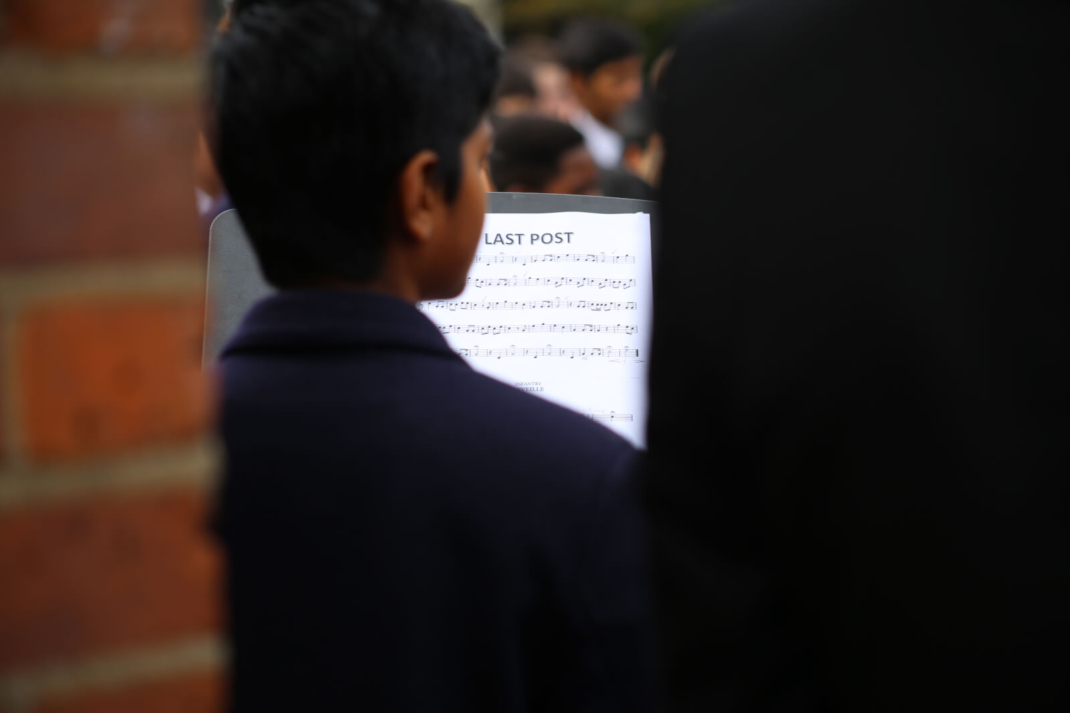
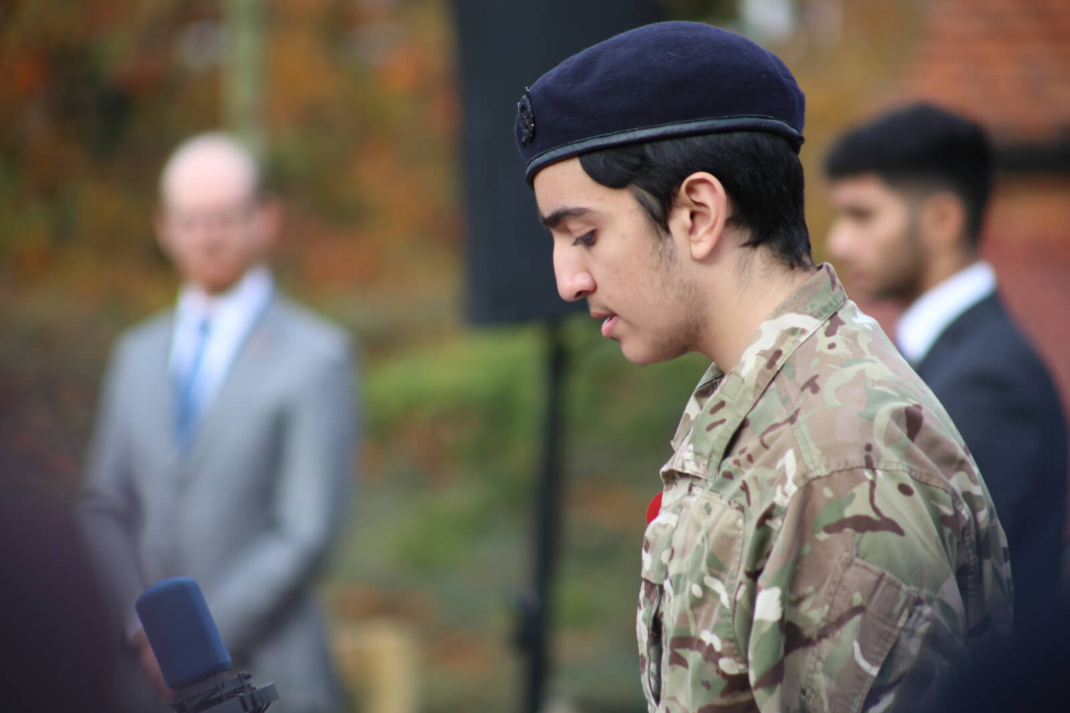
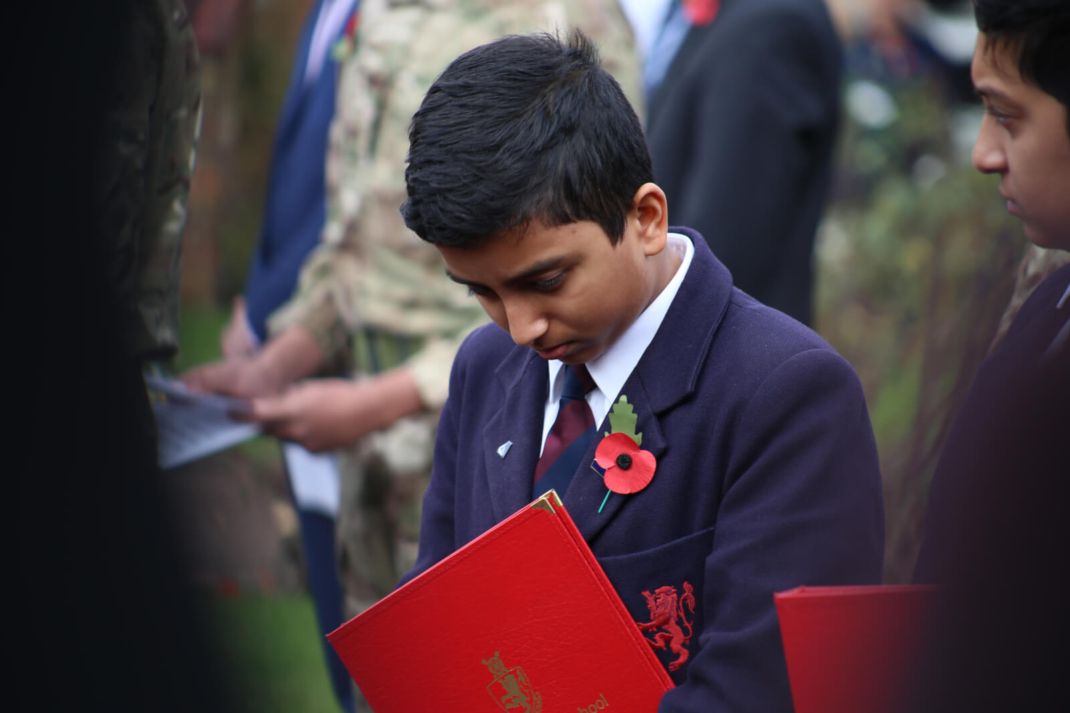
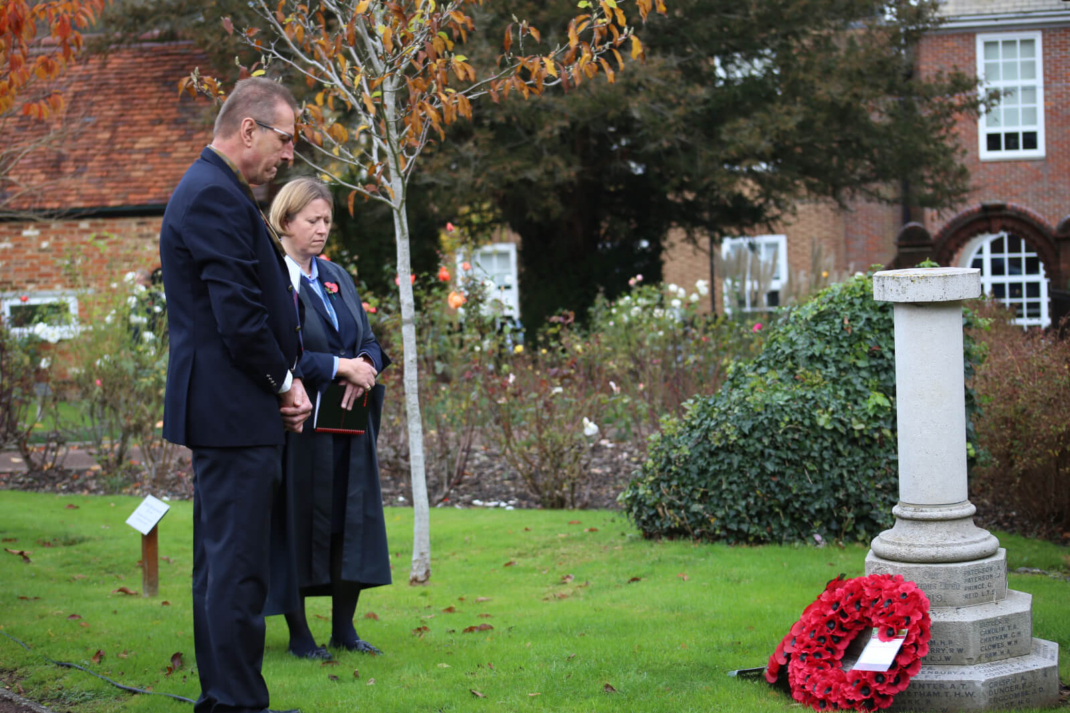
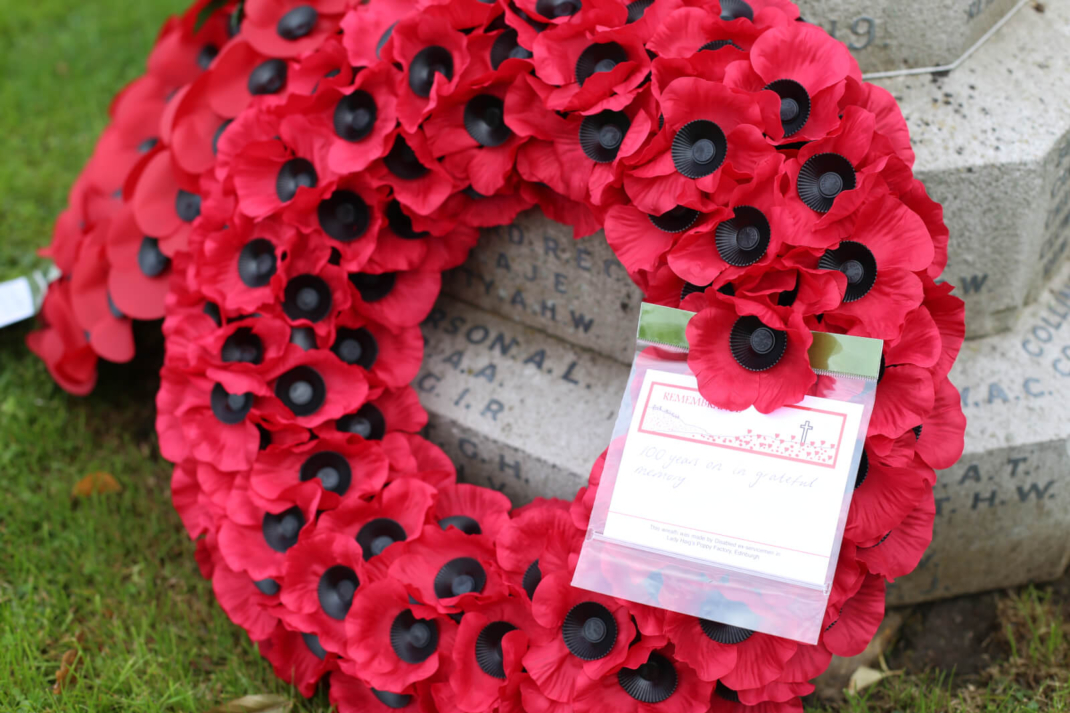
A C Bayley, an old boy of this School who had joined the British Expeditionary Force, wrote: “My regiment has had a pretty hot time. Perhaps you saw in the Daily Mail recently that we had done good work at the Hill. We are now having the first rest for 24 days. At one time we had a hot time digging ourselves in under very heavy shrapnel and rifle fire. Had one or two narrow squeaks. The first time up, I spent five days in the firing line within 70 yards of our old friends the ‘Allemands’. Most of the scrapping then was after dark, when they practised rapid fire on our sand bags. Since then we have had any amount of work in broad daylight. It was then I had a dose of the good old chlorine of lab. days in the past. I never anticipated meeting it in these surroundings, while manufacturing it at school.”
Former John Lyon master, Mr Hargreaves, wrote from St George’s Hospital, Malta, in November 1916 describing how he had crawled up the German lines in broad daylight in order to gain valuable intelligence about the enemy. He managed to return unharmed with “lashings of information” and was congratulated by his commanding officer. Before he explains how he ended up in the hospital in Malta, he comments briefly on the horrors or bombardment: “In itself a bombardment is rather rotten – too noisy and dusty and smelly. What makes it so frightful, though, is the sight of poor chaps that you’ve chummed with for a couple of years lying, perhaps moaning, with a limb or half their face blown off. It was so bad on this occasion that I don’t mind confessing I actually cried at one time, hard case as I’ve become, still, we lost surprisingly few, all things considered, and we got our own back in a counter attack which they made. Through all this shemozzle I never got a scratch, bar a clump on the head through a big chunk of iron dropping on my tin hat – of course without the tin hat I’d have completely lost my head – as it was I uttered language which would make the most inattentive class sit up and take notice.”
Late in April 2015, French and imperial forces attempted to open a new front in Turkey at Gallipoli. Although the campaign continued for nine months, little was achieved and, in January 1916, the battered and bloody Allied forces withdrew. Former pupil Raynal Sordes Ellis was killed aged 19 at Gallipoli. His parents wrote the following poignant tribute to their son:
Peaceful he lies with patriot comrades sleeping
The task performed that victory might be won-
If Britain’s cause be served and its upkeeping
We freely yield, though miss and mourn our son
The John Lyon 59
| W R ABBATI | K J P ASHER | R E C ASHFORD | A J E BATES |
| A H W BEATTY | H H BERRY | J BEST | H P BOREHAM |
| R W BRADBERRY | C J W BROWN | B G BUTLER | T A CANDLIN |
| G H CHATHAM | W H CLOWES | H A CRAM | W D DENSHAM |
| R L S ELLIS | F A FILLMORE | E H FRYER | J F GARWOOD |
| E de W GREEN | T H GREEN | E J HAMILTON | H HEYWOOD |
| A HIGGINS | R E HOLDAM | H C HOOK | P L HOOK |
| C JOINER | H S L JORDAN | E N KILBURN | T E LION |
| F G E MASON | H MUDDOCK | J M P MUDDOCK | R NAYLOR |
| R A NORRIS | W OLIVER | F M PARKSHOUSE | A W PARKER |
| L B PARSONS | A F PATERSON | J PATERSON | G C M PRINCE |
| L T S REID | E G STEARNS | F SLADE | J H STILLMAN |
| R D SADD | J G B SMITH | J H TAYLOR | G H TIGAR |
| H W TIGAR | P H M URNBULL | H J WIGG | J P WILLIAMS |
| W R WILLIAMSON | A J WOOD | S G WOODBRIDGE |
John Lyon is an independent school, a member of HMC, ISC and is reviewed in the Good Schools Guide.
Pupils typically join John Lyon in Years 7, 9 and 12, largely from a North West London catchment area including Harrow, Wembley, Stanmore, Pinner, Watford, Rickmansworth, Northwood, Ruislip, Hillingdon, Uxbridge, Ickenham, Northolt, Southall, Ealing, Acton, Edgware, Brent Cross, Finchley, Barnet, Camden, Westminster, Kensington & Chelsea, Hammersmith & Fulham, as well as other parts of Middlesex, Berkshire, Buckinghamshire and Hertfordshire.
See forthcoming open events, concerts and exhibitions on our What’s On page.

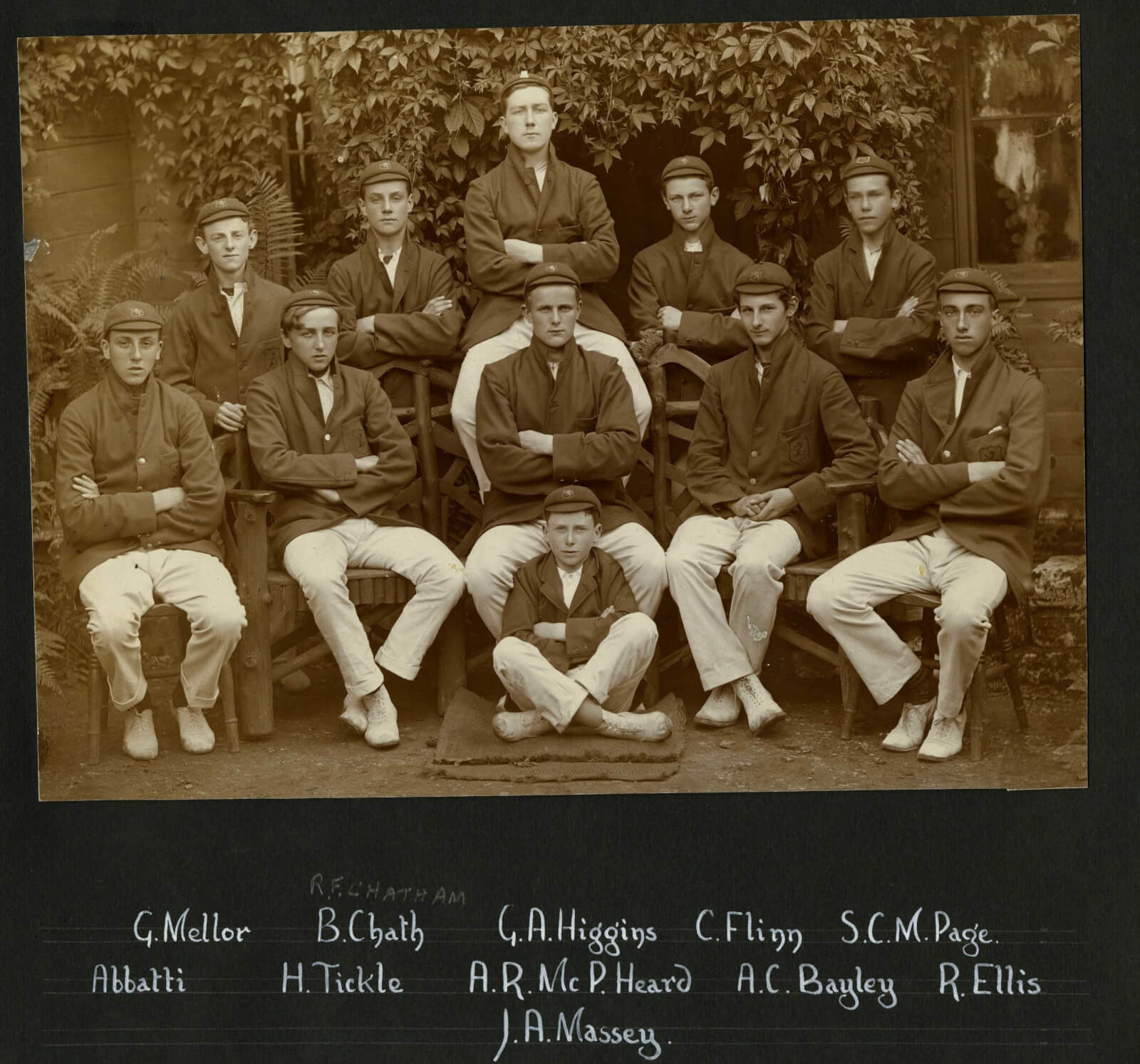
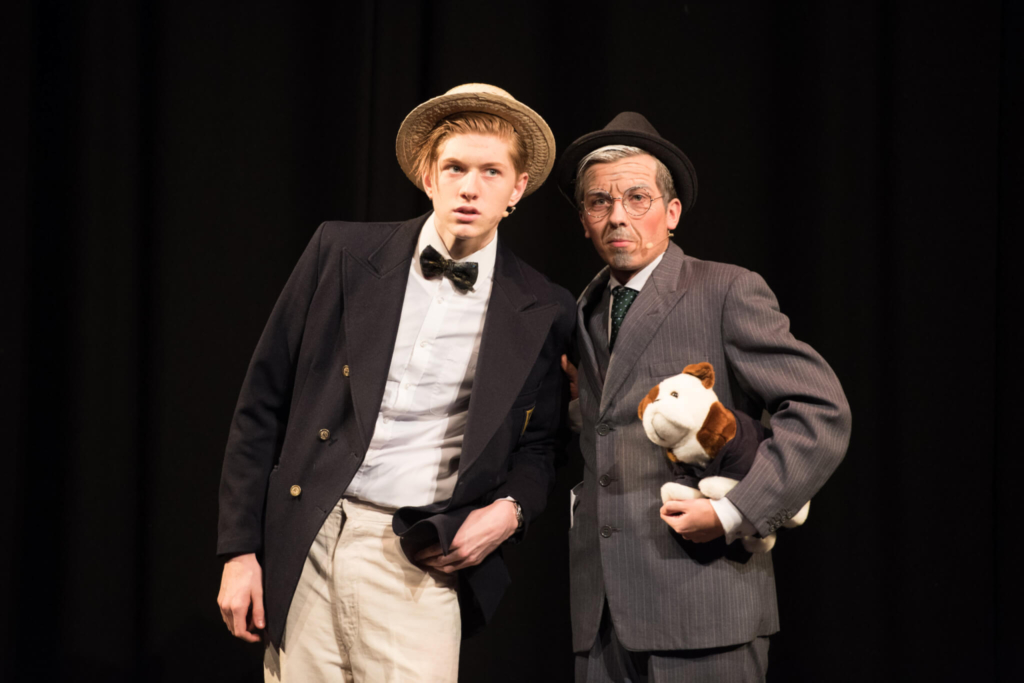
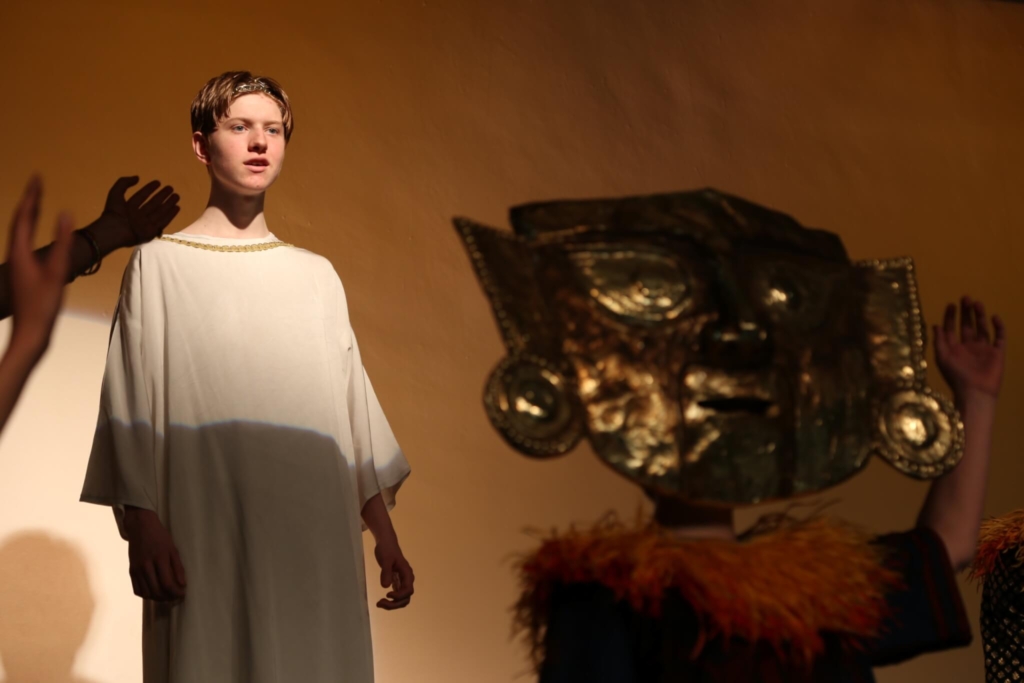
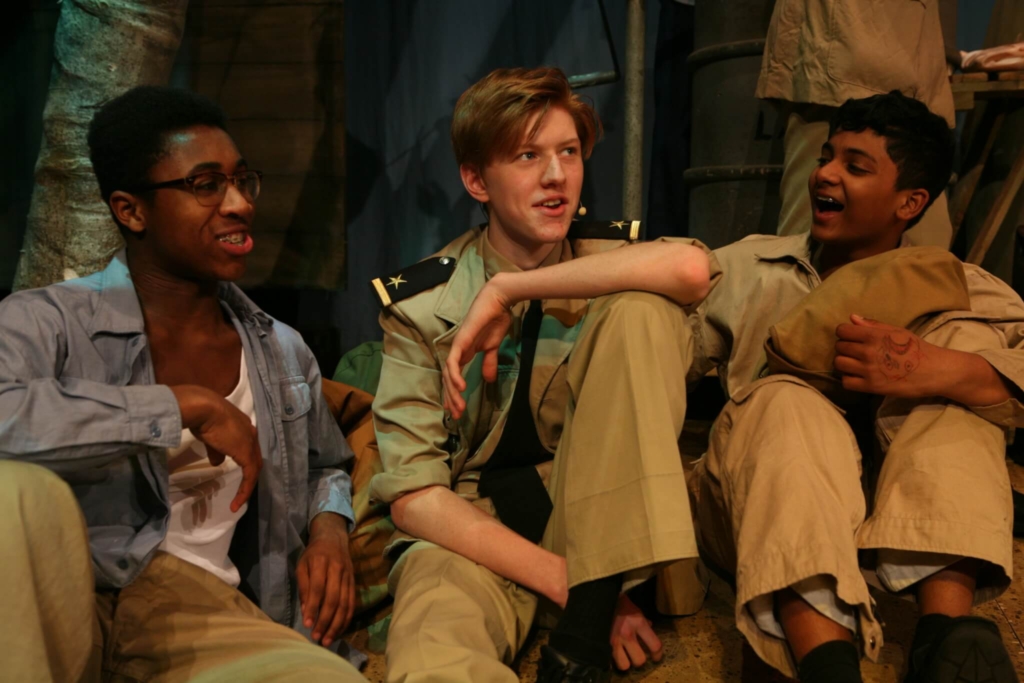





















































 We provide a wide range of sporting activities and opportunities for all pupils.
We provide a wide range of sporting activities and opportunities for all pupils. At our Prep School we concur with educational theorists who emphasise the importance of the creative mind and ‘emotional intelligence’ and ‘wellbeing’ – the need to develop the whole personality and our pupil’s imaginations especially. Drama has the power to liberate the mind.
At our Prep School we concur with educational theorists who emphasise the importance of the creative mind and ‘emotional intelligence’ and ‘wellbeing’ – the need to develop the whole personality and our pupil’s imaginations especially. Drama has the power to liberate the mind. We encourage our pupils to become healthy, independent and responsible members of society.
We encourage our pupils to become healthy, independent and responsible members of society.  At our Prep School, Computing covers the use of electronic technology in all its forms, including computers and other communication devices.
At our Prep School, Computing covers the use of electronic technology in all its forms, including computers and other communication devices. • What is religion?
• What is religion?
 Art is an integral part of our Prep School’s curriculum, providing our pupils with a unique means of expressing their ideas by allowing them to explore new thoughts and give life to their creative minds.
Art is an integral part of our Prep School’s curriculum, providing our pupils with a unique means of expressing their ideas by allowing them to explore new thoughts and give life to their creative minds. History is taught throughout the School and pupils are encouraged to find out about events and peoples.
History is taught throughout the School and pupils are encouraged to find out about events and peoples. Planet Earth is our only home. It is an mind-blowing, diverse and constantly changing place of awesome beauty and power.
Planet Earth is our only home. It is an mind-blowing, diverse and constantly changing place of awesome beauty and power.  French is the language of our nearest neighbours, probably the easiest foreign language for English speakers to learn and, after English, one of the most widely-learned languages worldwide.
French is the language of our nearest neighbours, probably the easiest foreign language for English speakers to learn and, after English, one of the most widely-learned languages worldwide. The core of every science lesson at our Prep School is about developing every pupil’s curiosity in the world around them.
The core of every science lesson at our Prep School is about developing every pupil’s curiosity in the world around them.  Mathematics is a key subject for children of all ages at our Prep School.
Mathematics is a key subject for children of all ages at our Prep School. English is taught using lively and creative methods through a variety of texts and resources incorporating ICT from Pre-Prep onwards.
English is taught using lively and creative methods through a variety of texts and resources incorporating ICT from Pre-Prep onwards.